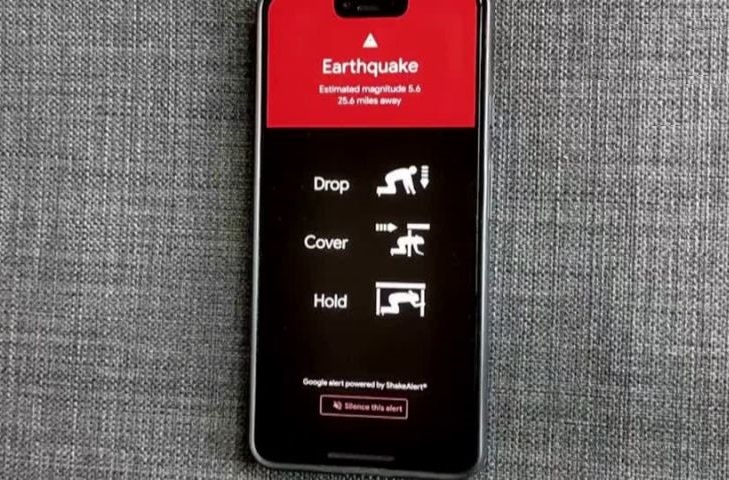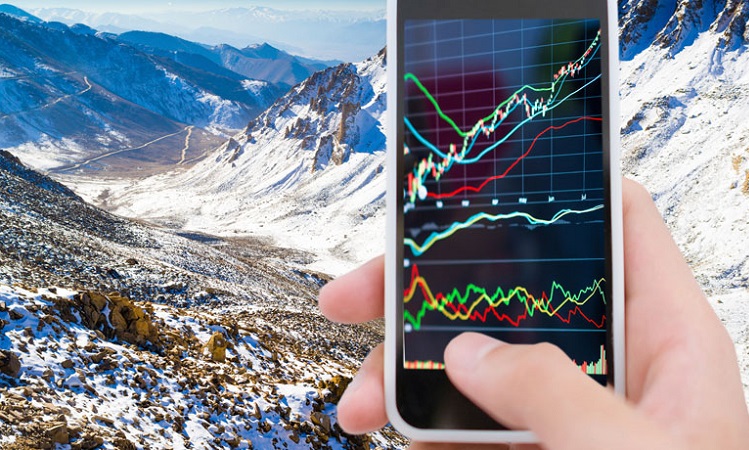If you make a list of stuffs that a smart phone replaces, that would be a pretty big one. From mailboxes to alarm timepieces, cameras, wall calendars and clocks, watches, pen, notebooks… and I can’t end this list! And now, Google is about to introduce a latest technology by which your smartphone can act as a seismograph. A seismograph predicts earthquakes.
What are sensors?
The world of sensors by the advent of Micro electronic mechanical systems (MEMS) has made smartphones amazing in our life. Various sensors do a variety of tasks. They sense where the device is located, which way it’s moving, and how fast.

Some of them can recognize your fingerprints, your face and the words you’re speaking. This allows them to entertain us, keep us healthy, help us find our way home and much else besides. But a growing branch of science is devoted to pooling information generated by the world’s 3.5 billion smartphones for the common good.
How this new technology works?
Now, Google announced that their latest sensor can sense early tremors in the earth’s surface. Install a front-end Android app in your smart phone, and this back-end sensor will predict earthquake in your area!
google makes use of accelerometer for this new technology. This sensor is actually useful to detect phone’s movement.
“We figured out Android phones are sensitive enough to detect earthquake waves,” said Google’s Marc Stogaitis in an interview. “They usually see both key types of waves, the P wave [primary] and the S wave [secondary]. Each phone is able to detect that something like an earthquake is happening, but you need an aggregate of phones to know that for sure.”
Google understood that while seismographs are expensive, phones are relatively cheap and very common. When data combined from those phones is analysed, anomalies can be filtered out and the location and strength of quakes can be pinpointed. The company still stresses, however, that it’s still just an experiment for the time being.
“The basic concept has been proven to work,” says Kanjo. “But they can’t risk it and say yes, we know the answer. The main issue is always scalability.”
This problem has recently been seen in attempts to use apps to contain the spread of Covid-19. In small-scale experiments, track-and-trace can be shown to work. But in the real world, there’s a fear of it either failing to detect cases, or generating false positive results which can have a huge impact on society.
Fortunately, the stakes aren’t so high in the majority of mobile sensing applications. Millions of us see it at work every day as navigation apps alert us to the movement of road traffic.
Two roadblocks
Google says that only two things stand in the way of this new technology. One is the restrictions put in place by the likes of Google and Apple on the way sensors can be used. “We have suffered a lot as developers because of these restrictions,” says Kanjo. “It’s not always easy to develop ideas when companies are in control.”
The second one is the attitude of the public to their phones being used in this way; passive data sharing has gained a somewhat toxic reputation in recent years. “The ethics are often exaggerated,” says Kanjo. “Right now, your phone company is being told that me and you are talking, and that’s far more intrusive than something like Covid contact tracing.”
Google’s earthquake app, according to Stogaitis, de-identifies the information: “We don’t need to know anything about the person that’s sending it.” The company hopes this technology – being not just individual centered, but rather a disaster warning aid – could get around all the hurdles in front of it.




![The Top & Most Popular Seafood Bucket Restaurants in Dubai for you [Never Miss]](https://uae24x7.com/wp-content/uploads/2020/09/8-seafood-in-a-bucket-scaled-e1600739237403.jpg)
![Procedures for Renewing the Driving License in Abu Dhabi [3 Simple Steps]](https://uae24x7.com/wp-content/uploads/2020/07/Capture-9-e1595666454466.jpg)





